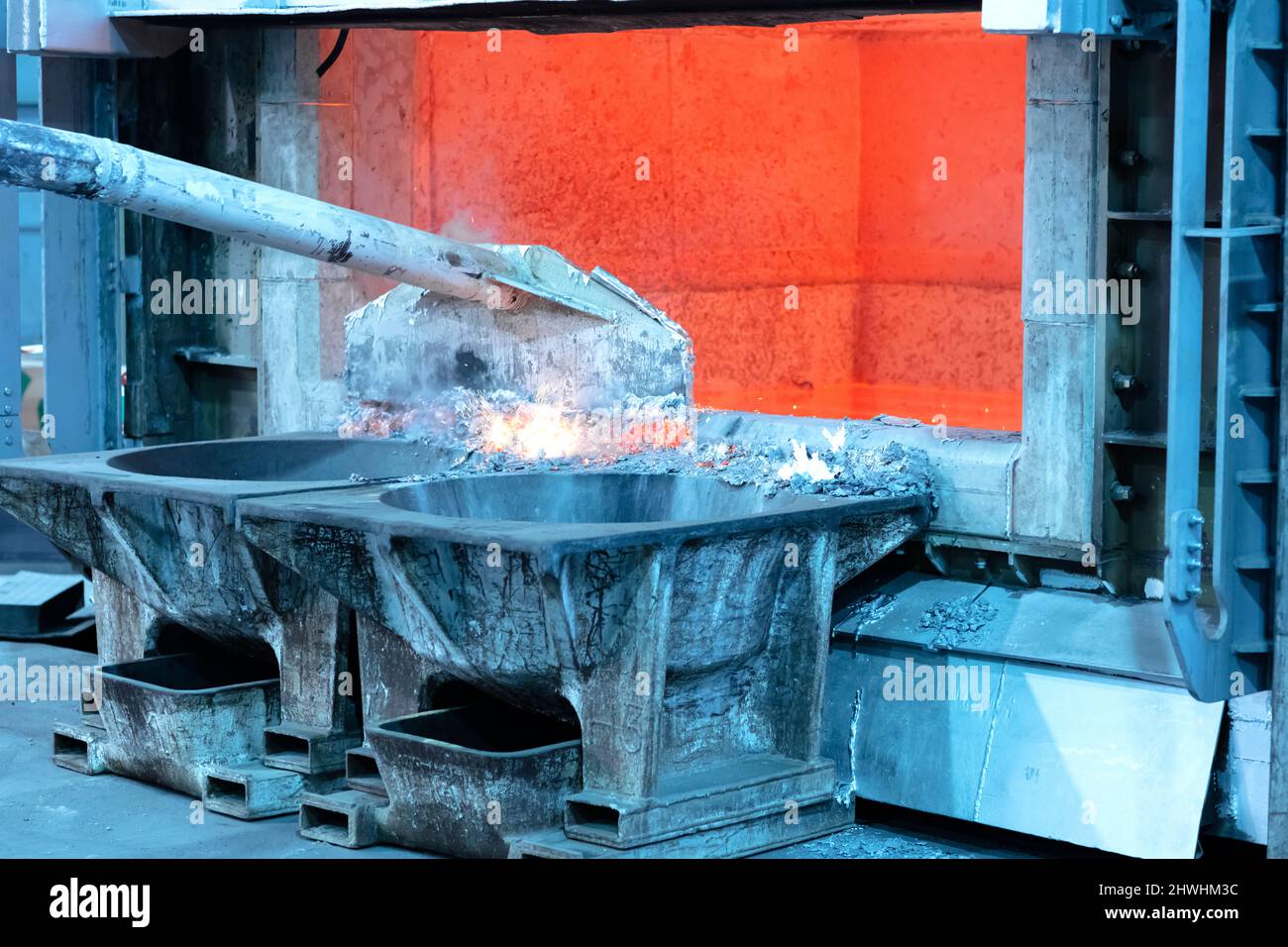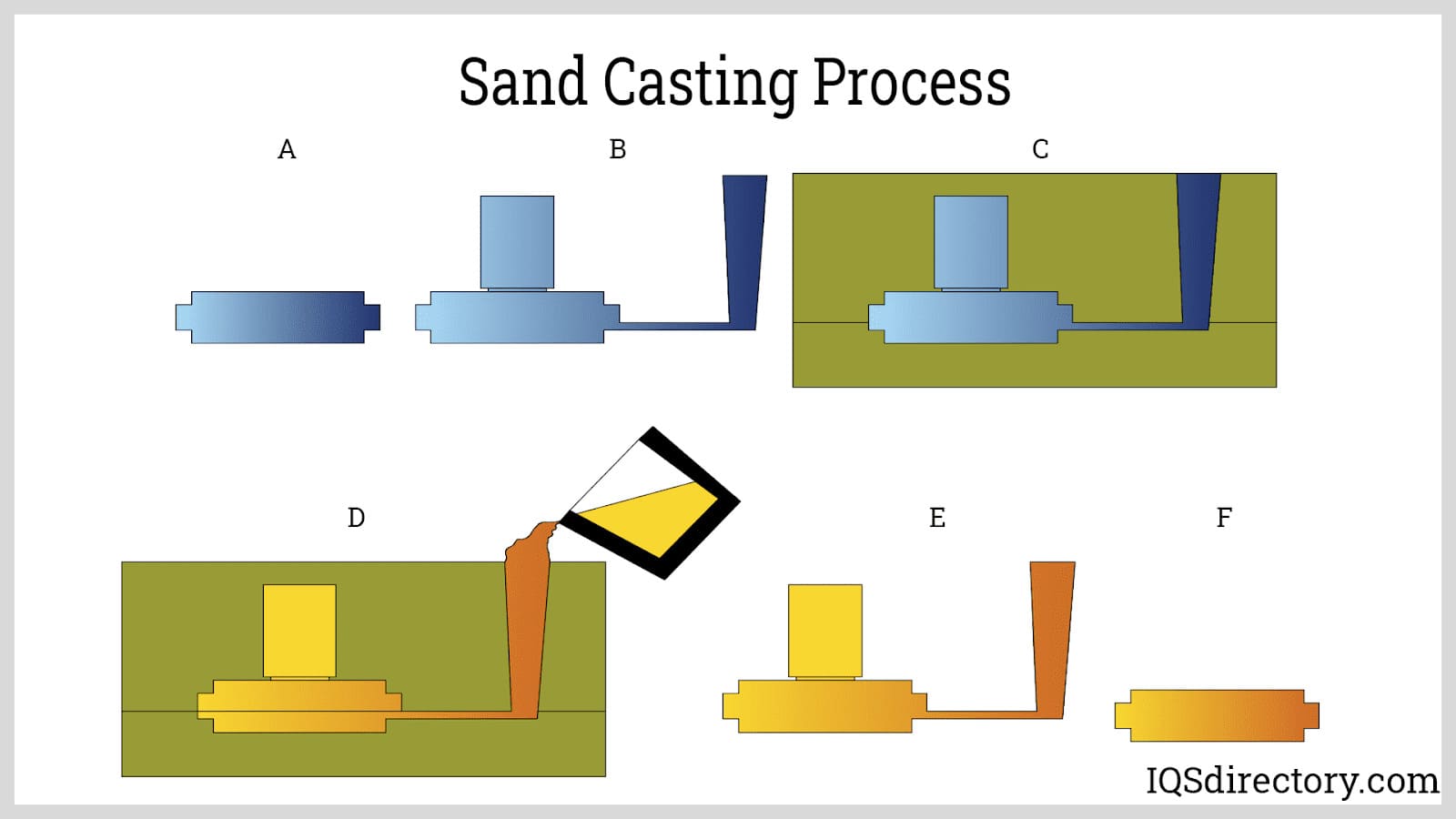Exactly How Aluminum Foundry Contributes to Innovations in Aerospace Design
Aluminum shops are indispensable to innovations in aerospace design. They produce light-weight, high-strength elements that are crucial for modern-day aircraft. Via innovative casting strategies, these factories create intricate geometries that improve structural integrity. Furthermore, the development of premium Aluminum alloys sustains the market's focus on fuel effectiveness and sustainability. Challenges remain in the manufacturing process. Recognizing these elements discloses the extensive impact of Aluminum on aviation's future.
The Significance of Lightweight Materials in Aerospace Layout
As the aerospace sector continues to progress, the relevance of lightweight materials comes to be increasingly obvious. The need for performance and sustainability drives designers to prioritize using products that lower total weight without jeopardizing architectural honesty. Lightweight materials, particularly Aluminum, play an essential role in boosting fuel performance, improving haul capacity, and boosting the general efficiency of aircraft.
The assimilation of these products enables for innovative styles, allowing makers to produce more wind resistant shapes that can withstand extreme problems. The decrease in weight not only lowers operational expenses however additionally adds to a lowered ecological impact, lining up with global initiatives toward sustainability in aviation.
Advanced Spreading Techniques in Aluminum Foundries
Advanced spreading methods in Aluminum shops play a critical role in aerospace engineering by making it possible for the manufacturing of specific and light-weight elements. Developments in mold and mildew layout and precision casting procedures are essential in accomplishing excellent performance and structural stability. In addition, the advancement of lightweight alloys improves the total performance and performance of aerospace applications.
Cutting-edge Mold And Mildew Layout
Cutting-edge mold style plays an important duty in the performance and efficiency of Aluminum shops, especially within the aerospace market. By leveraging sophisticated products and strategies, modern-day molds can be engineered to withstand heats and stress, guaranteeing peak efficiency during the casting procedure. These layouts commonly incorporate complex geometries that permit the production of light-weight yet structurally sound parts, important for aerospace applications. Furthermore, the use of computer-aided design (CAD) software program helps with specific modeling, allowing foundries to imitate and refine mold layouts before physical manufacturing starts. This not just enhances the top quality of cast parts yet also minimizes waste and lead times, causing significant expense financial savings. Overall, ingenious mold and mildew design is a foundation of progression in Aluminum Foundry technology for aerospace design.
Precision Casting Procedures
The effectiveness of ingenious mold and mildew styles flawlessly integrates with precision spreading processes, which are essential for producing top notch Aluminum parts in aerospace design. These processes, consisting of sand spreading, pass away spreading, and investment spreading, ensure the production of intricate geometries with limited resistances. Advanced techniques like vacuum cleaner spreading and pressure die casting boost the honesty and surface area coating of the final items. Accuracy spreading reduces material waste while taking full advantage of the mechanical homes of Aluminum, vital for aerospace applications. Furthermore, using real-time tracking and progressed simulation tools throughout the spreading procedure permits instant modifications, causing boosted quality assurance. Collectively, these accuracy casting procedures position Aluminum factories at the forefront of aerospace innovation, sustaining the sector's need for integrity and efficiency.
Light-weight Alloy Development
As aerospace designers look for to enhance gas effectiveness and performance, light-weight alloy growth ends up being an essential focus in Aluminum shops. These factories employ innovative casting methods to create alloys that give premium strength-to-weight proportions. Advancements in alloy make-up, consisting of the consolidation of elements like lithium and magnesium, enable the manufacturing of materials that withstand extreme conditions while minimizing total airplane weight. Methods such as die spreading and investment casting facilitate the accuracy manufacturing of intricate shapes, which are critical for aerospace applications. In addition, recurring research study aims to enhance these alloys for boosted mechanical properties and raised sturdiness. By prioritizing light-weight alloy development, Aluminum factories significantly add to the development of aerospace engineering, leading the way for much more lasting and efficient aircraft layouts.

Enhancing Architectural Integrity Through Aluminum Components
Aluminum parts use significant advantages in boosting structural honesty within aerospace design. Their lightweight nature adds to general effectiveness while keeping toughness, which is vital for airplane performance. Additionally, the tension resistance residential or commercial properties of Aluminum help guarantee the sturdiness and integrity of aerospace structures under different functional problems.
Lightweight Material Advantages
While typical materials commonly jeopardize weight for strength, utilizing Aluminum parts in aerospace engineering provides significant advantages in architectural honesty. Aluminum's lightweight nature adds to total layout effectiveness, enabling more structured aircraft that eat less fuel, thereby boosting sustainability. The product's exceptional strength-to-weight ratio assurances that parts maintain toughness without adding unnecessary mass. This quality cultivates enhanced efficiency and dexterity in flight, as well as maximized payload abilities. Furthermore, Aluminum's resistance to corrosion lengthens the life expectancy of aerospace structures, minimizing maintenance costs and improving safety. As makers progressively adopt Aluminum alloys, the aerospace market experiences a transformative change in the direction of much more reliable and reliable design solutions that focus on both efficiency and environmental obligation.
Anxiety Resistance Qualities
Numerous products possess distinct homes, Aluminum's phenomenal stress resistance stands out as a crucial factor in enhancing the structural stability of aerospace components. This resistance plays an important duty in making certain that aircraft can withstand various functional stress and anxieties, including exhaustion, impact, and environmental conditions. Aluminum alloys, specifically crafted for aerospace applications, display high tensile stamina while keeping light-weight characteristics, enabling engineers to develop a lot more reliable structures - Aluminum Foundry. Furthermore, the capacity of Aluminum to sustain cyclic loading without significant contortion adds to the longevity and integrity of aerospace parts. As advancements continue in Aluminum Foundry methods, the advancement of stress-resistant Aluminum components guarantees further renovations in performance, safety and security, and performance throughout the aerospace market, strengthening Aluminum's duty as a favored material in modern engineering
Gas Effectiveness Improvements Driven by Aluminum Innovations
As the aerospace sector looks for to read the full info here improve fuel effectiveness, ingenious uses Aluminum have arised as a crucial option. Aluminum's light-weight nature significantly decreases airplane weight, enabling for reduced gas intake throughout flight. This decrease in my company weight is crucial, as even small reductions can cause substantial improvements in general gas economic climate.
Advanced Aluminum alloys, designed for enhanced toughness and toughness, allow suppliers to create elements that keep architectural integrity while lessening mass - Aluminum Foundry. Additionally, the assimilation of Aluminum in airframes and engine parts facilitates boosted the rules of aerodynamics, adding to reduced drag and increased effectiveness
The adoption of Aluminum in aerospace not just satisfies the demand for fuel-efficient design however also aligns with governing stress for lower exhausts. As these developments remain to evolve, they play a substantial function in establishing new benchmarks for fuel effectiveness, making certain that the aerospace sector can satisfy expanding economic and ecological difficulties.

The Role of Aluminum in Sustainable Aeronautics Practices
The boosting focus on lasting aeronautics practices has positioned Aluminum as a crucial material in the pursuit for greener airplane design. Recognized for its lightweight buildings, Aluminum significantly decreases airplane weight, resulting in lower gas usage and emissions. Its recyclability additionally boosts its sustainability account, as Aluminum can be recycled forever without loss of quality. This particular sustains a round economy within the aviation market, decreasing waste and resource depletion.
Advancements in Aluminum alloys have actually improved their toughness and corrosion resistance, permitting for longer solution life and decreased upkeep demands. These technologies assist in the growth of extra efficient aircraft frameworks, adding to total sustainability efforts. Furthermore, Aluminum's thermal conductivity plays an essential duty in energy-efficient styles, boosting systems such as heat exchangers. Collectively, these attributes highlight Aluminum's critical duty beforehand sustainable aeronautics, aligning with global campaigns intended at decreasing the environmental effect of flight.
Challenges Dealt With by Aluminum Foundries in Aerospace Manufacturing
While Aluminum shops play an important function in aerospace manufacturing, they deal with substantial obstacles that can impact manufacturing efficiency and top quality. One significant challenge is the strict quality control requirements required in the aerospace sector. Any flaw can endanger security and efficiency, necessitating rigorous inspection procedures that prolong manufacturing timelines. Furthermore, foundries usually emulate rising and fall raw product expenses, which can influence pricing and productivity. The complexity of Aluminum alloys used in aerospace applications additional makes complex the production process, as accurate formulas are important for achieving desired mechanical buildings. Additionally, competent labor scarcities impede the ability to preserve high-quality manufacturing levels. Ecological guidelines impose limitations on emissions and waste administration, needing foundries to invest in find out sustainable methods, which can be cost-prohibitive. These elements jointly create a landscape where Aluminum shops need to constantly adjust to meet the progressing demands of aerospace production while ensuring safety and security and conformity.
Future Fads in Aluminum Applications for Aerospace Engineering
With developments in technology and enhancing demands for performance, the future of Aluminum applications in aerospace engineering is positioned for significant transformation. The combination of ingenious Aluminum alloys and composites is anticipated to enhance strength-to-weight proportions, causing more fuel-efficient airplane designs. Furthermore, advancements in additive manufacturing techniques will certainly enable for the manufacturing of complicated Aluminum structures that were previously impossible, maximizing efficiency and minimizing waste.

Sustainable techniques will certainly play a necessary duty, with an expanding emphasis on reusing Aluminum to decrease environmental influence. The aerospace sector is most likely to accept smarter making procedures, such as automation and expert system, ensuring better and accuracy in Aluminum parts. Cooperations between Aluminum foundries and aerospace business will certainly foster study and advancement, leading the method for brand-new applications that satisfy the strict demands of modern aerospace engineering. Overall, the future looks promising for Aluminum's duty in forming the skies
Frequently Asked Concerns
What Are the Environmental Influences of Aluminum Manufacturing in Aerospace?
The ecological influences of Aluminum manufacturing in aerospace include considerable energy usage, greenhouse gas emissions, and habitat disturbance. Furthermore, mining processes can lead to soil degradation and water contamination, elevating problems concerning sustainability and environmental equilibrium.
How Does Aluminum Compare to Other Products in Aerospace Applications?
Aluminum supplies an unique mix of lightweight properties, deterioration resistance, and cost-effectiveness contrasted to other materials. Its high strength-to-weight ratio makes it especially beneficial for aerospace applications, enhancing gas efficiency and total efficiency in airplane design.
What Credentials Do Aluminum Foundry Workers Demand for Aerospace Projects?
Aluminum Foundry workers call for specialized training in metallurgy and spreading methods, in addition to knowledge of aerospace sector requirements. Certifications in quality assurance and security protocols are additionally necessary to assure conformity with strict aerospace task requirements.
Are There Any Kind Of Safety Worry About Using Aluminum in Aerospace Engineering?
Security problems pertaining to Aluminum in aerospace design consist of susceptibility to corrosion, stress and anxiety, and tiredness fractures. Proper treatment and alloy choice are important to alleviate these threats, making certain structural honesty and total safety in aerospace applications.
How Does Aluminum Recycling Benefit the Aerospace Market?
Aluminum recycling considerably profits the aerospace sector by minimizing material expenses, minimizing ecological impact, and preserving power. This lasting method boosts the industry's efficiency while promoting making use of lightweight, high-performance elements in airplane manufacturing.
Advanced casting methods in Aluminum factories play a critical role in aerospace design by making it possible for the manufacturing of accurate and lightweight parts. Cutting-edge mold layout plays an essential role in the performance and efficiency of Aluminum factories, particularly within the aerospace field. As aerospace designers seek to enhance fuel performance and performance, lightweight alloy development becomes an essential emphasis in Aluminum shops. Aluminum alloys, particularly engineered for aerospace applications, show high tensile stamina while maintaining light-weight features, allowing designers to make much more effective frameworks. Cooperations between Aluminum factories and aerospace business will cultivate research study and advancement, leading the method for new applications that meet the stringent requirements of modern-day aerospace design.